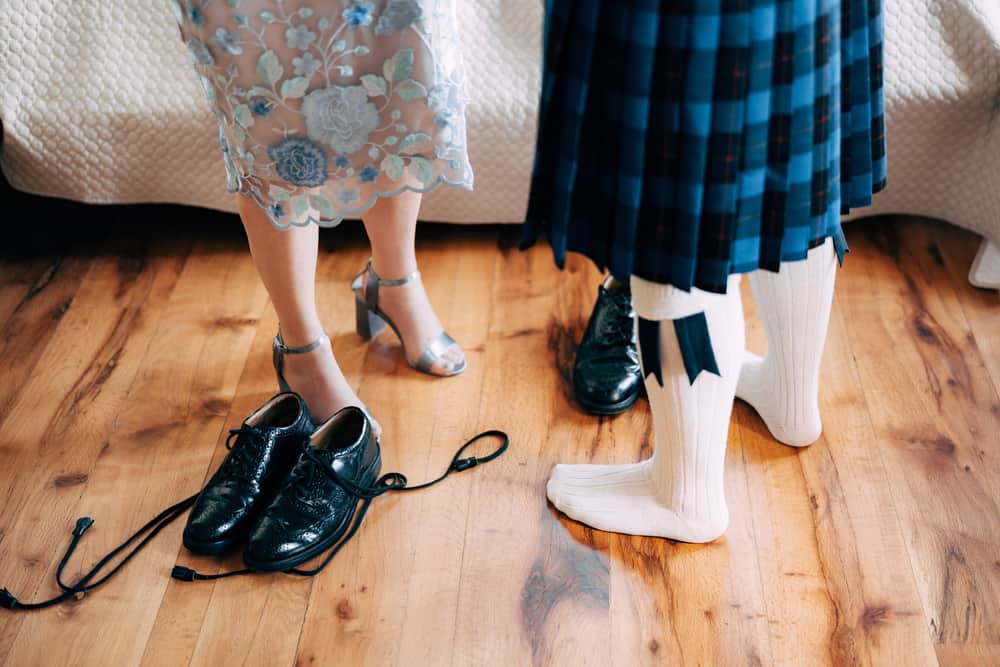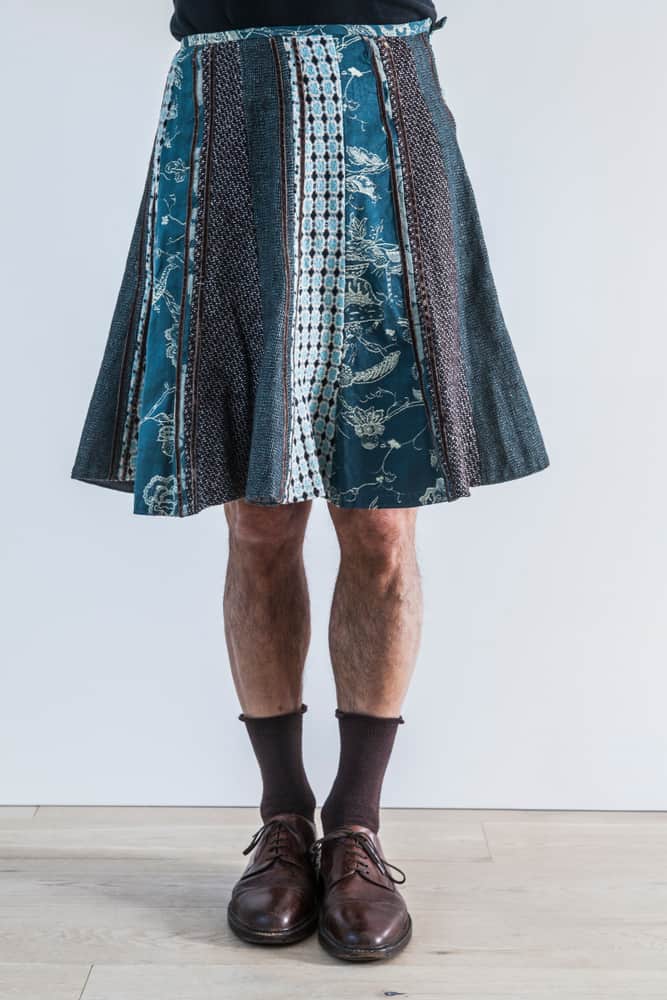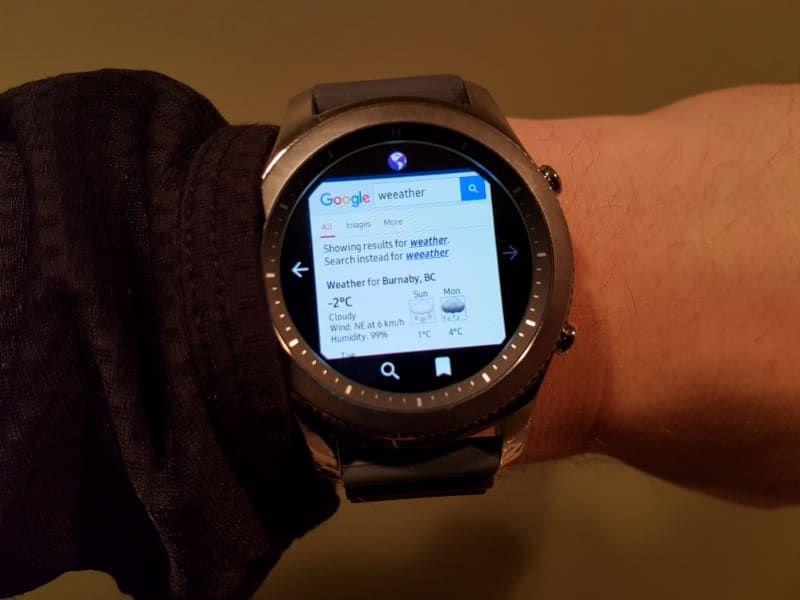The article explores the issue of unisex skirts. It gives the fullest answer possible to the title-question, and then delves into other issues related to the topic.

Skirts are for girls! That is the response that would usually greet anyone who suggested that men can wear skirts. But times change. What were once outlandish ideas can over time become commonplace.
A hundred years ago it was still an outrageous act for a woman to cut her hair short and to wear pants. Seventy years ago, it was a crime for white and black people to marry each other. And it was only thirty years ago that same-sex marriage did not exist. Now all these things are widely accepted and little commented on.
The point is that most people view skirts as being for girls and women because they have mostly seen the latter wear them. The rejection of skirts for men is based on what is viewed as accepted social practice. This writer is not immune to prejudice.
He is an American man in his mid-40s who has grown up with it. However, he is also well-traveled, with a wide variety of friends and acquaintances from different backgrounds. He has seen much, including men in skirts, which seemed, at the time, perfectly fitting and natural.
Table of Contents
- What is a Unisex Skirt?
- A Short Answer to the Question
- The Challenging History of the Unisex Skirt
- The LGBTQ Connection
- Contemporary Designers
- A Possible Future for Unisex Skirts
What is a Unisex Skirt?
A unisex skirt is one that is designed without a specific gender in mind. A unisex skirt turns on its head the idea that skirts are exclusively for girls. The design and production of unisex skirts do not take place in a social vacuum. The companies behind this fashion trend know that they are breaking the metaphorical wall created by skirts and that they are doing so in order to stir a broader dialogue about gender fluidity and equality.
A Short Answer to the Question

Are skirts unisex? That is the title question of the article. And the short answer to it must be yes and no. It is necessary to equivocate because unisex skirts are not worn by a majority of men. They are not yet comparable to other types of unisex clothing and accessories such as jeans and sweaters.
These items are sold in volumes around the world every day. The same cannot be said of genderless skirts, so one is hard-pressed to acknowledge them as unisex—that is, they are not yet commonly worn by men and women
On the other hand, unisex skirts are available on the market. Certain clothing designers have dedicated themselves to creating and manufacturing unisex skirts. Many apparel companies are blurring the lines between their men’s and women’s departments, and they are offering more unisex skirts and other gender-neutral clothing.
But it is necessary, to be honest about the reach and popularity of unisex skirts. They are still confined mostly to high-street fashion. Anyone interested in buying such a product will find them only at select vendors.
At the risk of lapsing into stereotypes or overbroad generalizations, you are more likely to find a unisex skirt in a New York, L.A., or Chicago department store than in a retailer in rural Kentucky, Georgia, or Tennessee. People in the latter states will find a wider collection in online stores.
The Challenging History of the Unisex Skirt

Before we get into this topic, we must first clear the air about what is not a unisex skirt: namely, a kilt. The kilt is not a skirt worn by men; a kilt is an article of clothing designed to be worn by men. You will not see women in kilts because they are exclusively for men.
This garment has its roots in the Scottish Highlands. The various patterns denote the different tribes. Modern-day Scotsmen wear kilts for special ceremonies such as weddings, graduations, and other celebrations.
Now, onto some history.
Haute couture brands began pushing unisex designs some time ago. In 1984, Jean Paul Gautier dressed male models in skirts. And perhaps most famously, Hollywood superstar Brad Pitt sported a mini dress in a photo shoot that made the cover of Rolling Stone magazine in 1999.
More recently, Jaden Smith (son of mega-stars Will Smith and Jada Pinkett Smith) modeled a unisex skirt on the fashion runway. And Jared Ledo and Kanye West have also been photographed in unisex skirts over the last decade.
Department stores and well-known clothing brands have gotten into the genderless act. In 2015, Selfridges launched its Agender initiative to merge the menswear and womenswear sections in its stores. Zara also released its gender-neutral line of jeans, hoodies, shirts, and skirts in 2016. And in 2017, John Lewis removed gender labels from its line of kids’ clothing.
All of these moves and movements would seem more than enough to break unisex skirt-wearing into the mainstream. They have not done so.
The trouble—if trouble it can be called—is that men wearing skirts still seems like cross-dressing. There is a kind of social inertia that compels people to view skirts as exclusively feminine. A male executive, for example, who showed up to work with a unisex skirt on would probably be sent home to change, and may even lose his job.
A man who showed up in a bar or at the gym with such clothing on would, in most instances, be shunned; and in certain places, may even be threatened with physical violence.
Even the celebrity men who wore unisex skirts were given a hard time about it. Jaden Smith’s dad told him emphatically “you cannot wear a skirt” when his son informed him of the Louis Vuitton photoshoot. Jared Leto was given the rather unflattering award of World Worst Dressed Man from GQ.
The supposedly hip and cosmopolitan magazine noted that the main reason for giving Leto the award is because he wore “skirts about as frequently as pants”. And Kanye West was attacked by other hip-hop artists through vicious anti-skirt lyrics after he wore a skirt in 2011. West subsequently demanded that Getty Images remove all pictures of him in the garment.
The LGBTQ Connection

The history and current state of unisex skirts can only be fully understood within the context of the LGBTQ movement. The fight for trans rights in particular is part and parcel of this ascending fashion trend.
The objection to unisex skirts undoubtedly springs from transphobia. The more violent protests come from people who are unabashedly bigoted. But the prejudice is also present in critics who believe themselves modern, hip, and liberal-minded.
Determined LGBTQ rights activists have made the issue of gender identity a topic of perpetual discussion in the public sphere. It has forced society at large to question the many socially constructed conventions that define male and female, masculinity and femininity.
Older generations of men and women have a hard time breaking out of these categories. But the kids are more open to the idea of gender fluidity. And the fashion industry is more interested in the opinions and attitudes of younger people because they constitute the largest pool of current and future consumers.
Unisex skirts are slowly becoming a new norm in high street fashion. Major brands are beginning to acknowledge that their clothes need not be gender-specific. These developments are partly a response to the LGBTQ movement. The latter has made fashion live up to one of its core principles: to make clothes in the spirit of individual self-expression.
Contemporary Designers
For a man to wear a skirt says nothing about his gender or sexuality. The main aim of unisex skirts is to expand the ways and means by which men can look fabulous. Unisex skirts are appearing more and more in clothing stores because demand for them continues to increase.
A few designer labels are leading the pack. They have made a point of making skirts that can be worn by men. Here are a few of them:
1. JW Anderson
The company was founded a decade ago. Since then, it has made an effort to blur the lines between masculine and feminine clothing.
2. Rad Hourani
The founder of this designer brand is perhaps the best spokesman of the clothes produced by his company: “They are genderless, ageless, and limitless, They come from no nations, no race, no religion, yet they could be at home anywhere, anytime.”
3. LaneFortyFive
This designer is passionately committed to the production of ungendered clothing. From wide-legged trousers to chore jackets to unisex skirts, it makes clothes that are made from the best fabrics and shapes them, by hand, into exquisite designs.
4. Skirtcraft
This designer start-up was founded in 2015 with the express purpose of creating and selling unisex skirts. It continues to flourish, designing gender-neutral skirts for people of all body types.
A Possible Future for Unisex Skirts

The future of the unisex skirt is bright. Although it is still largely frowned upon for men to wear skirts, getting the trend to become mainstream will not necessarily come through direct action. Such fashion trends never come as the result of a fight. They tend to be a consequence of the time it takes for a trend to build on itself.
It should also be pointed out that new cutting-edge fashions sometimes burst into the mainstream at the end of a traumatic social event. Women wore bobbed hairstyles and short skirts before the First World War, but the destruction of the War undermined the attitudes and conventions that gave rise to it and gave the rising generation more freedom to try new things.
The same thing may happen in our own time. The death, destruction, and demoralization caused by the COVID pandemic have likewise rocked the social consciousness, and we may see a similar large-scale willingness to experiment with new fashion ideas.
The greater acceptance of unisex skirts will also depend on the decline of misogyny, homophobia, and transphobia. All of these pathologies are bound up in the psychic resistance to men in skirts. Here the work of activists and ordinary people do count for something.
Even those who may find that a unisex skirt does not complement their figure or harmonize with their style should exhibit a welcoming attitude to the garment. For it is the case that unisex skirts represent a victory for gender blurring, gender fluidity, and, ultimately, gender equality. The point is not that every man should feel pressured to wear a unisex skirt to prove their tolerance, but that everyone should view the wider acceptance of this piece of clothing as a further check on prejudice.




